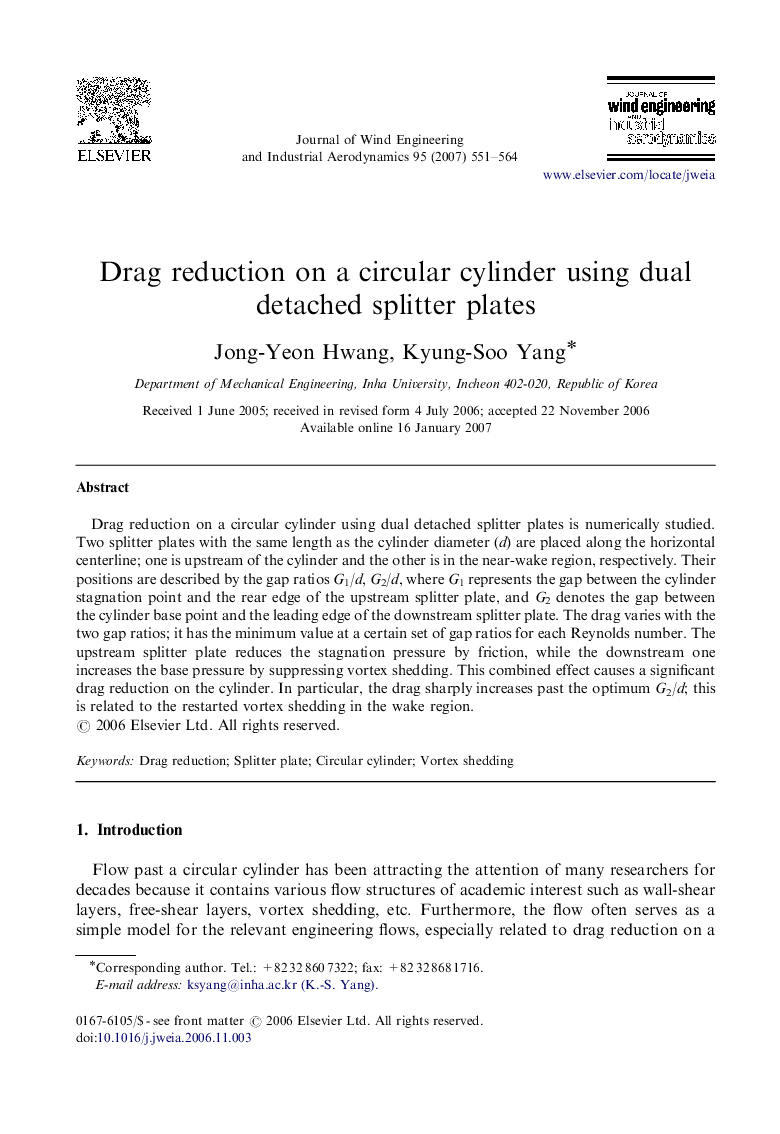| Article ID | Journal | Published Year | Pages | File Type |
|---|---|---|---|---|
| 293396 | Journal of Wind Engineering and Industrial Aerodynamics | 2007 | 14 Pages |
Drag reduction on a circular cylinder using dual detached splitter plates is numerically studied. Two splitter plates with the same length as the cylinder diameter (d) are placed along the horizontal centerline; one is upstream of the cylinder and the other is in the near-wake region, respectively. Their positions are described by the gap ratios G1/d, G2/d, where G1 represents the gap between the cylinder stagnation point and the rear edge of the upstream splitter plate, and G2 denotes the gap between the cylinder base point and the leading edge of the downstream splitter plate. The drag varies with the two gap ratios; it has the minimum value at a certain set of gap ratios for each Reynolds number. The upstream splitter plate reduces the stagnation pressure by friction, while the downstream one increases the base pressure by suppressing vortex shedding. This combined effect causes a significant drag reduction on the cylinder. In particular, the drag sharply increases past the optimum G2/d; this is related to the restarted vortex shedding in the wake region.
